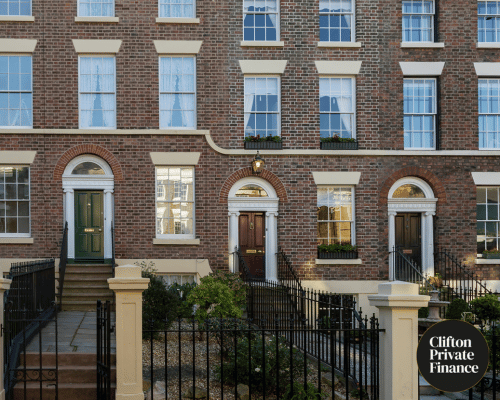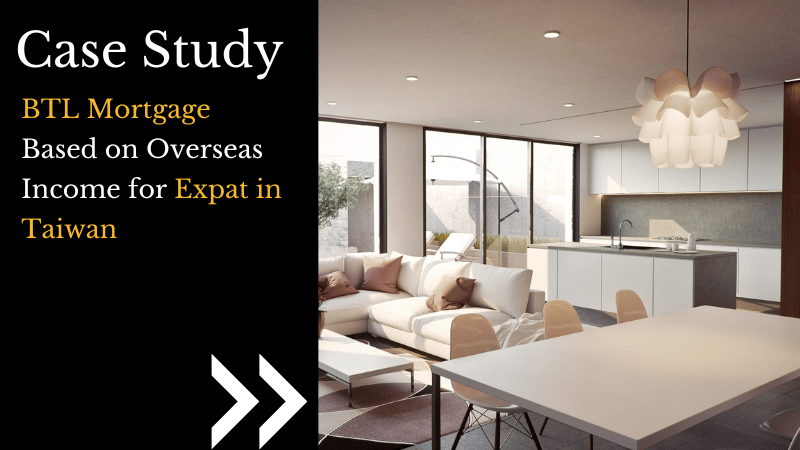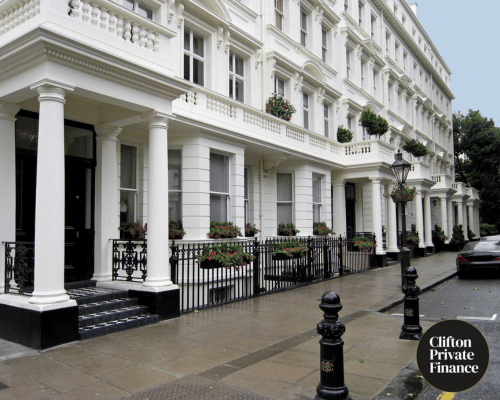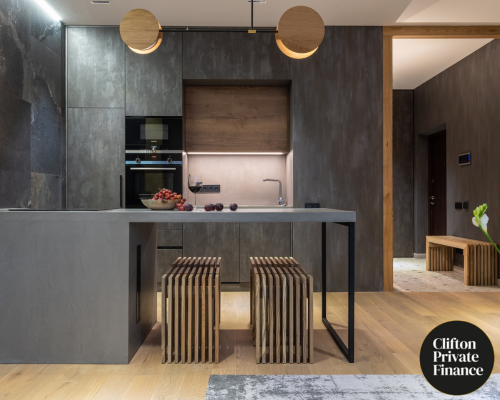Categories
How Do Buy-to-Let Mortgages Work?
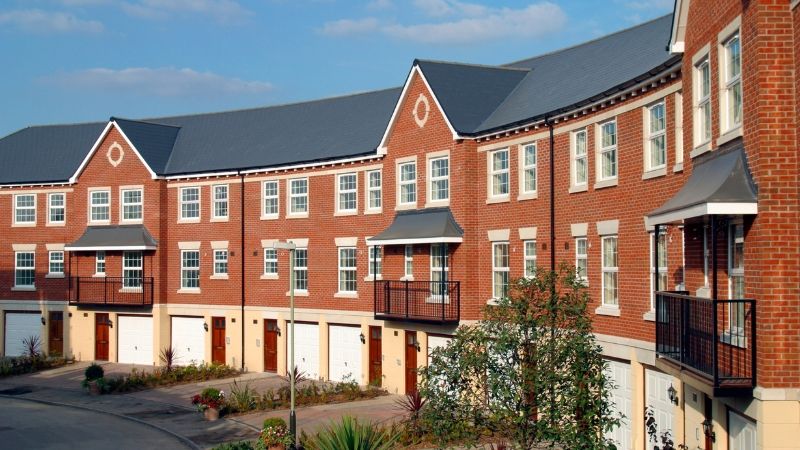
Buy-to-Let (BTL) mortgages are the staple financial product for landlords across the UK. When tailored well to your needs, a BTL mortgage provides an affordable loan that’s perfectly suited for property investment, with low monthly payments, clearly-structured repayments, and ongoing flexibility to adapt to changes in your circumstances.
Poorly considered, however, a BTL mortgage can lead to a challenging time as a landlord, causing disillusionment and financial difficulties.
Looking for a Buy-to-Let Mortgage?
What is a Buy-to-Let Mortgage?
A BTL mortgage is one designed for the express use of purchasing a property to let to tenants, rather than to live in yourself.
Key Features of a BTL Mortgage:
- A property purchased with a standard BTL mortgage must be rented out to a third-party tenant. It cannot be lived in by the property owner or their immediate family.
- BTL mortgages are typically structured as interest-only. While capital repayment BTL mortgages exist, they are less common.
- Affordability and mortgage application is based on expected rental income, not your salary.
- BTL mortgages can be obtained by individuals or limited companies.
- BTL mortgages are intended for residential use (homes let to a live-in tenant), with similar commercial mortgages available for business premises such as offices, factories, or warehouses.
At Clifton Private Finance, we provide comprehensive consultancy to both private and business landlords, sharing our expertise and network of lender relationships to offer customised BTL mortgage solutions for landlords at every level.
Find the Perfect Buy-to-Let Mortgage
Interest-Only BTL as Investment
A buy-to-let mortgage is usually considered part of a long-term investment strategy for the borrower.
Unlike a standard repayment residential mortgage, such as the one used to buy your own home, the balance (or principal) of the interest-only BTL mortgage remains untouched throughout the mortgage lifespan, with the monthly repayments made up solely of the interest generated by the loan.
While this means monthly repayments can be kept as low as possible, at the end of the mortgage term, the principal remains and must be repaid in full.
While this can seem counterintuitive as an investment principle, the structure is extremely sound, thanks to both inflation and the general upward trend of the property market.
With either of these exit strategies, the investment in the property is more than likely to have a strong return for the owner.
What about during the intervening years? By saving over £500 per month on the mortgage, the owner-landlord has been able to let out the property at a fair market rent, make a monthly profit, and fold money back into the property for maintenance and renovation as required. In fact, a well-managed property with a plan for improvements may well exceed the anticipated end value, resulting in a greater final return on investment for the owner.
How Much Can You Borrow with a Buy-to-Let Mortgage?
A buy-to-let mortgage provides the funding necessary to buy a property with minimal personal financial investment - however, that investment is not zero. When looking to acquire a flat or house as a landlord, the standard loan-to-value (LTV) of a BTL mortgage is 75%. This means you need a deposit of 25%.
For first-time landlords, the standard 25% deposit can seem high, especially when compared to a residential mortgage where deposits are more often 10-15%, and in some cases as low as 5%. This is for several reasons:
- Residential mortgages are positioned to help people get a home to live in - a lower deposit is essential to make home ownership viable for many.
- Government regulations support residential home ownership, encouraging smaller deposits in that sector.
- The risk for lenders when providing a mortgage for home ownership is statistically lower than with BTL mortgages, with defaults far less likely in the residential sector. This helps support a lower deposit / higher LTV structure.
- BTL mortgages are seen as an optional business investment - even on an individual level - which the deposit size represents.
- The interest-only nature of a BTL means the principal is never repaid, making the risk of a long-term high LTV loan too great for many lenders.
At Clifton Private Finance, we partner with specialist lenders who may offer larger LTV loans in certain circumstances - potentially as high as 80-85%. Note that higher LTV loans are likely to come with higher interest rates and potentially stricter affordability.
In some situations, a lower LTV will be offered. This may be because:
- The property is valued below £100,000.
- It is of non-standard construction.
- It has below average rental yield for the area.
- It’s an HMO (House in Multiple Occupation) or MUFB (Multi-Unit Freehold Block).
Raising the deposit for your BTL property may be easier when you already own a residential home. Specialist secured finance, such as a remortgage, second-charge loan, or bridging finance can help you use the equity that you have built up in your main home as part or all of the deposit for a second house as a landlord. Your CPF advisor can help you evaluate the options to speed your BTL mortgage application.
Understanding BTL Affordability Stress Tests
Because you are personally responsible for repaying a residential mortgage, the affordability tests for one are based on your credit history, income, and outgoings. This is not the same with buy-to-let mortgages.
A BTL mortgage is based on the business viability of your rental property. Lenders understand that the intention is for the rental income to cover the mortgage repayments each month, and so it is with that expected rental income that they look when assessing affordability.
Lenders must also take other factors into account. For example:
- What happens if the interest rates rise - will the rental income cover the mortgage if that happens?
- What about void periods when you are between tenants and the rental income is zero?
- Have you enough rental income to cover ongoing maintenance and potential management fees as well as the mortgage?
Therefore, simply having an expected rental income that meets the current situation is not enough - you need to show that you the rental property has the stability to keep up with mortgage payments even if things go wrong. To do that, the mortgage application is stress tested against higher interest rates, which are then further boosted by the Interest Cover Ratio (ICR), an additional percentage that represents those potential overheads.
As per regulations, the ICR is set to 125% for longer term fixed rates (5+ years), and 145% for shorter terms (2-year fixed rate).
To comfortably meet a BTL affordability stress test, you should assume the rental income must meet a stress test interest rate that’s two percentage points above the offered rate, and with a 145% ICR.
It is this stress test figure that the expected rental income must meet, a strict criteria that presents its own challenges.
Top-Slicing - Offsetting Rental Income with Your Salary
When the expected rental income fails to meet the stress tests, top-slicing is an accepted solution where you add your personal disposable income figure to the expected rental income to meet the lender’s affordability requirements. You are effectively saying ‘if the rent is ever not enough to cover the mortgage repayments, I’ll make up the difference from my paycheque’.
Top-slicing is a specialist adjustment that is not offered by all lenders and requires a proactive mortgage broker to present as an option. Clifton Private Finance has established relationships with decision makers across multiple specialist lenders who are willing to consider top-slicing when expected rental income is too low to pass stress tests. If our advisors believe top-slicing should be presented as part of your mortgage application, we will discuss this with you.
For an in-depth look at top-slicing, read our knowledge base article What is Top-Slicing in Buy-to-Let Mortgage Borrowing?
The Buy-to-Let Mortgage Process - A Step-by-Step Guide
Obtaining a BTL mortgage is a lot easier with an expert alongside. At Clifton Private Finance, we work with you throughout the application process to ensure a smooth time - and to increase the chance of acceptance!
- First consultation - An initial chat with our mortgage advisory team will let us understand your goals and your circumstances, essential for setting out the expectations.
- Drafting the core business plan - Being a landlord should be seen as a business. If this is your first time becoming a landlord, then you should take this time to put your thoughts onto paper; if you are experienced with rental properties, your existing business plan should be updated to include the planned new property.
- Obtaining an agreement-in-principle (AIP) - The AIP (also called decision-in-principle (DIP)) provides you with the lender’s agreement that the mortgage is likely. It involves a soft credit search and quick eligibility test. With CPF as your partner, an AIP can be obtained quickly, often within a few hours.
- Making an offer - If you haven’t already found the ideal property, you can go forward with the AIP to do so. If you have, then the AIP gives you the credentials to make an official offer.
- The full mortgage application - We will work with you to get your full details and those of the property to the lender.
- Lender’s valuation - The lender will make an independent valuation of the property and confirm the expected rental income.
- Underwriting and approval - With all the necessary data, the lender will conduct a full risk assessment and affordability stress test.
- Mortgage offer is made - If everything goes as expected, your official mortgage offer will come through. Don’t worry if there are any problems - our team will be on hand to reassess the situation and meet any challenges.
- Conveyancing and legal work - The legal process will be completed.
- Completion - Contracts are signed and money transferred. Congratulations!
A Buy-to-Let Mortgage Timeframe
Working with CPF means the mortgage process is as smooth as possible, though it will still take some time.
- Consultation to AIP - Depending on your preparedness, we can move from our first chat to an AIP in as quickly as a few hours. Realistically, this usually takes a few days to give you time to consider the advice given and fully develop your plan.
- Full application to offer being made - The lender’s valuation and underwriting can take a few weeks, so patience is needed. Expect a decision to be made within 2-4 weeks of submitting the full application.
- Legal process - The local authority searches and other conveyancing can take another 2-4 weeks.
You should prepare for your buy-to-let mortgage and property purchase to take between one and three months. We undertake to expedite this as much as possible, working with efficient and experienced lenders, making sure the process is as quick as possible.
Moving Faster - Utilising Bridging Finance to Seize Opportunities
In some cases, a standard buy-to-let timeframe is simply too slow to work, and the opportunity to get the perfect property will slip through your fingers. This might be because:
- There is a lot of interest in the property.
- The property is to be sold at auction (auctions require full payment within 28 days).
- The sale is a private one with an immediate deadline.
When speed is essential, bridging finance provides the answer. Rapid funding that’s designed to seize opportunities, bridging finance can be put in place within 7-10 days (and often, faster), releasing enough capital to buy the property while the BTL mortgage application is still in the early stages.
To learn more about bridging finance to speed up property purchases, read our comprehensive Guide to Bridging Finance.
Types of Buy-to-Let Mortgages
As a specialist product, BTL mortgages are tailored to meet the precise requirements of landlords. At Clifton Private Finance, we will advise you on the mortgage types that best suit your exact needs, making sure you get a fit that provides the maximum flexibility and lowest interest rates.
Standard BTL
The buy-to-let mortgage that we have outlined in detail can be considered a ‘standard’ interest-only buy-to-let mortgage. It is best suited to individuals who are looking to own between one and three rental properties.
By far the most common BTL mortgage, a standard interest-only mortgage provides a strong investment opportunity that is properly stress tested to ensure short-term profitability, funds for ongoing maintenance and regular renovation, and a long-term return on investment.
SPV / Limited Company Mortgages
Setting up a limited company to manage your landlord operation offers both administrative and tax benefits. This structure, known as a Special Purpose Vehicle or SPV, gives you a professional outlook to owning additional properties for investment that is especially beneficial for landlords looking to grow their property portfolio.
Clifton Private Finance can help you develop your SPV concept and move you from an individual landlord to the director of a property management company. To lean more about SPV and limited company BTL mortgage structures, read our article SPV Mortgages for Landlords.
Portfolio Mortgages
A powerful mortgage structure for landlords and SPVs with four or more properties, BTL portfolio mortgages are large, umbrella mortgages that cover multiple properties with a single mortgage.
With a portfolio mortgage, it is easy to leverage equity across existing properties to use as the deposit for new purchases, helping you grow an expanding empire of properties that are all managed through simplified administration.
CPF can help you develop the business plan you need to move to a portfolio mortgage, introduce you to specialist portfolio lenders, and negotiate on your behalf to secure the lowest possible rates, boosting your rental profits. Speak to one of our portfolio experts at Clifton Private Finance to explore your options.
HMO and MUFB Mortgages
Houses in Multiple Occupation (HMOs) and Multi-Unit Freehold Blocks (MUFBs) require specialist mortgages due to their complex rental structures and valuation calculations. An HMO involves letting individual rooms to multiple tenants all sharing communal facilities (commonly called a ‘shared house’), while a MUFB consists of several self-contained flats in the same building. While being a landlord of either an HMO or MUFB building can result in significantly higher rental incomes than letting out the property to a single tenant, they come with significantly higher management requirements - and stricter lender conditions.
Our expert team at Clifton Private Finance work with lenders who specialise in these types of properties. Whether you’re converting a standard rental into an HMO, buying an existing MUFB, or looking to build a bespoke apartment block, we will help you obtain a mortgage solution that meets your needs.
Learn more about MUFB Mortgages with our detailed article Mortgage Finance for a Multi-Unit Freehold Block (MUFB).
Holiday and Short-Term Let Mortgages
Depending on your rental plan, a standard BTL mortgage may not fit your needs. One such situation is with short-term or holiday lets, such as Airbnb. Some difficulties for lenders include:
- Unstable rental income that may be high during peak seasons and suffer long void periods.
- The desire to use the property yourself as a holiday stay.
If rental income is variable, but the property is intended to be let out throughout the year (you don’t plan to stay in it at all), then a standard BTL mortgage often still fits; however, estimating rental yield and income is more complicated and potentially risky, so rates may be higher and the application process more lengthy.
When you wish to stay in the property on occasions during the year, then a holiday-let mortgage may be required. This is a hybrid product that merges some aspects of a BTL with a residential mortgage. It is structured as an interest-only BTL mortgage with an additional clause that stipulates you may spend up to 90 days each year in the property.
Holiday-let mortgages are a niche product available from only a few lenders. Like other specialist mortgages, they typically have a slightly higher interest rate than a standard BTL. At Clifton Private Finance, we can put forward your need to suitable lenders to secure you the mortgage you need - let us know from the outset if you are looking for a 90 day occupancy clause.
Let-to-Buy Mortgages
One common reason that leads to becoming a landlord is moving out of your current property to a new home, but wanting to keep your first property as an investment, converting it to a rental.
This requires a change in your mortgage, turning it from a residential mortgage to a buy-to-let mortgage. Known as let-to-buy, this specialist mortgage releases you to obtain a standard residential mortgage on a new property and become a landlord managing your old home.
Expat BTL Mortgages
Obtaining a UK BTL mortgage as an investment when you live abroad is best done with an experienced broker by your side. As standard BTL mortgages are only available for UK residents, a tailored expat BTL mortgage is essential.
This mortgage, developed for UK property but able to be obtained by those no longer living in the country, is slightly more complex than a standard BTL and will typically require a larger deposit (between 30% and 40%) with higher interest rates.
Nonetheless, even with these tighter conditions, an expat BTL mortgage offers expats and foreign nationals the opportunity to invest in the lucrative UK property market.
Speak to CPF to discuss the options available to you.
Mixed-Use Property Mortgages
A mixed-use property mortgage is a combination commercial and residential BTL mortgage that is essential if you are looking to buy a property that has both residential and business use, with the intention to let out the residential portion. Examples include:
- A shop with flats above - renting out the flats while using the shop for your business.
- A pub - often with a residential apartment included, many pub owners manage the business while letting out the residence to staff.
- A studio that operates both as workspace and residence - renting out this complete unit to a small business owner would require a specialist mortgage.
Mixed-use mortgages are complex, with in-depth valuations and multiple restrictions. Many lenders do not like to offer them due to the extensive risk assessment and underwriting, as well as meeting all legal regulations.
At Clifton Private Finance, we have established relationships with the specialist lenders who offer these niche mortgages. Otherwise developed as dual mortgages - one for the commercial property, another for the residential portion - blended mixed-use mortgages provide a cleaner administrative route and financial stability if setup well. As with some other specialist BTL mortgages, mixed-use mortgages may require:
- A larger deposit (between 25% and 40%)
- A comprehensive business plan, showing both the commercial business and rental management.
- A longer application window for complex valuation and underwriting.
- A limited company or SPV structure.
If you are looking to let out part of your shop, pub, or other commercial building, speak to a CPF expert today.
Final Considerations for BTL Landlords
Purchasing a property to rent out remains a strong investment even in the ever-changing UK property landscape, however, strong management and a full understanding of the mortgage options are essential to maintain profitability and ensure your time as a landlord is a rewarding, stress-light experience. Additional considerations worth further thought include:
- The tax implications of being a landlord.
- The need for regular re-evaluation of the mortgage to minimise rates and maximise profit.
- A comprehensive saving strategy and plan to smooth void periods (times with no tenants).
- The business administration, including building maintenance and upholding all regulations.
Partnering with Clifton Private Finance will give you every advantage. As a whole-of-market mortgage broker, we offer access to specialist lenders with the widest range of BTL mortgages. Our team have experience in working with:
- Niche mortgage structures (HMOs, MUFBs, expats, mixed-use, top-slicing, holiday-lets and more…)
- Individual, self-employed, and SPV structures
- Complex multiple income streams
- Bad credit applications
- Bridging finance into BTL as an exit strategy
- Property development and refurbishment funding
We are here to form an ongoing relationship with you throughout your landlord journey - not just a broker for a one-off mortgage, but a partnership to build on for your future.
Contact Clifton Private Finance today and unlock the investment potential of the UK property landscape.

